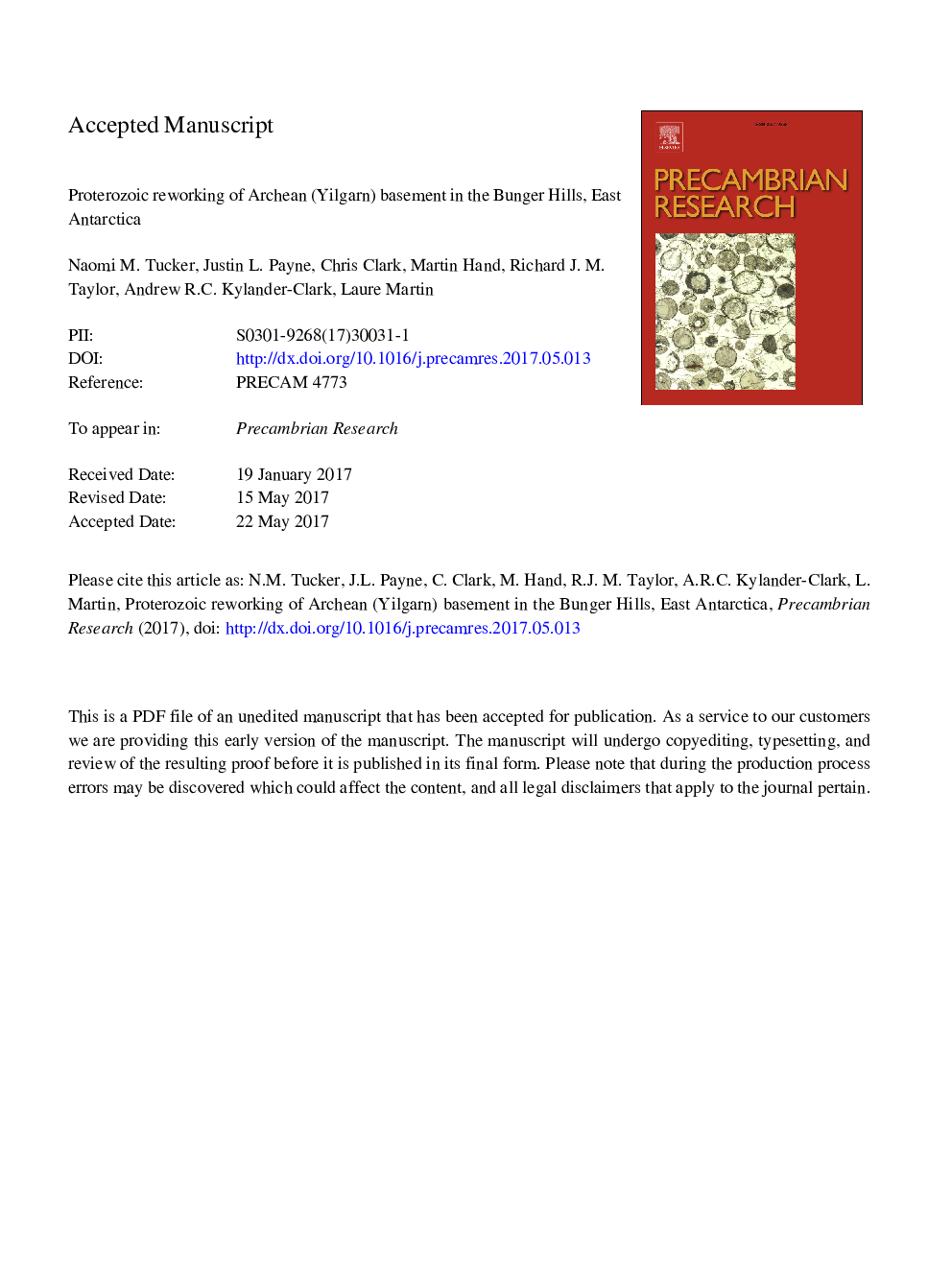| Article ID | Journal | Published Year | Pages | File Type |
|---|---|---|---|---|
| 5784782 | Precambrian Research | 2017 | 68 Pages |
Abstract
The Bunger Hills in East Antarctica occupy a pivotal location as the westernmost continuation of the Albany-Fraser Orogen in southwestern Australia. Combined U-Pb, Lu-Hf and oxygen isotope data from the Bunger Hills reveal a previously unrecognised Archean basement (ca. 2800-2700Â Ma) of Yilgarn Craton affinity. Results also reveal a Paleo-Mesoproterozoic (ca. 1700-1500Â Ma) volcano-clastic sequence and late Mesoproterozoic magmatic intrusives (ca. 1260Â Ma and 1200Â Ma) that were coeval with high grade metamorphism. Isotopic data reflect the influence of an Archean crustal component in Proterozoic magmatism. Paleoproterozoic magmatism was characterised by voluminous juvenile input and minor recycling of Archean crust. In contrast, Mesoproterozoic magmatism is isotopically evolved, and is interpreted to have been derived largely from reworking of the Paleoproterozoic crust and Archean basement. Strong parallels between the age and isotopic composition of igneous rocks over time from the Bunger Hills and Albany-Fraser Orogen in southwest Australia suggest that the Paleo-Mesoproterozoic tectonic evolution of these two elements of the orogen is linked. Specifically, the Bunger Hills are interpreted to represent the Paleo-Mesoproterozoic (para)autochthonous modification of a reworked fragment of the Archean Yilgarn Craton that was extended during the late Paleoproterozoic.
Related Topics
Physical Sciences and Engineering
Earth and Planetary Sciences
Geochemistry and Petrology
Authors
Naomi M. Tucker, Justin L. Payne, Chris Clark, Martin Hand, Richard J.M. Taylor, Andrew R.C. Kylander-Clark, Laure Martin,
